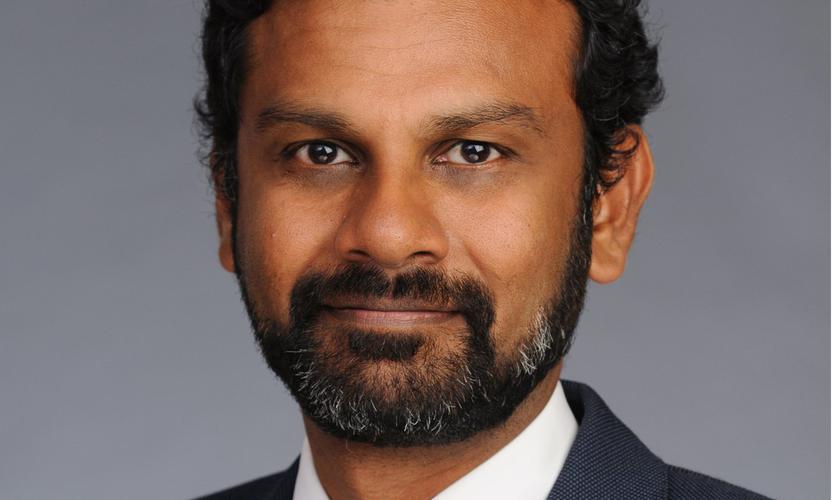Historically, ‘prime’ property has conjured images of glittering office towers, shiny shopping centres and luxury apartments. But beneath this glitzy veneer, a fundamental realignment has been shaking up the top-end of the real estate market in recent years, as the focus has shifted to the sustainability of its model. Now, the Covid-19 pandemic has brought a moment of reckoning, as investors are forced to consider which asset classes can best weather the economic fallout. In real estate, the challenge of collecting rents has highlighted the importance of secure cashflows. We believe this will accelerate the redefinition of prime property that was already underway before the crisis hit.
In the post-Covid era, the new prime will be determined not by the height of a skyscraper, the prestigiousness of its address, or the amount of marble splashed around its lobby but by cashflow characteristics. The new prime will refer to properties with stable, longer term income predictability, and some price insulation against volatility, as well as the capacity to improve sustainability ratings. And while Covid-19 is driving short-term disruption, demographic, technological and environmental changes will have more impact over the medium to long term.
Why is cashflow key?
The demand for income generating assets is growing as a result of demographic change. In North America, the baby boomer generation (born between 1946 and 1965) holds 55 per cent of investment assets, according to research by McKinsey and Pricemetrix, and a large proportion of those are looking for steady, reliable income streams in retirement. The next largest proportion is held by those in the oldest age bracket who are living off their assets.
This points to a further shift in investment portfolios over the next 10 years away from equity-style returns and towards fixed income. Yet, in a low interest rate environment, investors with liability matching requirements are finding it increasingly difficult to deliver duration and an attractive real return. The low interest rate environment is now likely to last even longer given the huge injection of capital via monetary and fiscal policy interventions in response to the economic impact of lockdowns. However, prime real estate could be well suited to meeting these requirements for income, if portfolios are well constructed with a focus on cashflow.
Pricing risks to current prime assets
Like many asset classes, quantitative easing has resulted in huge flows of capital into real estate markets globally over the past 10 years and the compression of yields. At the same time a flight to quality has resulted in this yield compression being far more dramatic for traditional prime assets than other segments of the market (Chart 2).
The Covid-19 pandemic is expected to result in a further widening of the spread between prime and secondary assets, much as has been seen in the equity and fixed income markets. This may initially result in relatively indiscriminate re-pricing of assets in line with traditional definitions of prime, i.e. focused on location and building quality.
This flight to perceived quality could drive prime yields even lower, reflecting the greater liquidity of prime assets in a period of low transaction volumes. However, at such low yields, these assets will need to generate significant income growth in the medium term to deliver outperformance, and the potential for mispricing of this risk increases markedly. Even a small shift in sentiment or a small increase in yields could harm capital growth for such ‘old prime’ assets. In a low growth market, it will be difficult to offset these effects with rental growth.
It will equally be important to ensure that there is appropriate differentiation of risk, especially when it comes to policy. During the Covid-19 pandemic, European governments have displayed varying abilities to deploy ’whatever it takes’ measures to get through this period of economic upheaval. There has also been a differing response in the willingness of governments to uphold the legal relationship between landlord and tenants, which could have significant long-term implications for those markets.
The German government, for example, has been clear on the importance of upholding lease contracts, while the French and UK governments have been far less supportive of landlords in favour of tenants. This suggests that German real estate will continue to be seen as a safe haven for investors as income has been better protected.
Finally, traditionally-defined prime buildings tend to command the highest rents. This provides another area of vulnerability/risk to cashflow in the current downturn. In periods of recession or weak economic growth, tenants become more cost sensitive, opting for cheaper, more affordable space, or find themselves able to drive down rents on their current space, thus reducing cashflow for the asset. Investors may therefore unwittingly be exposing themselves to more risk by “going defensive” and focusing on a narrowly defined concept of ‘prime’ based on the quality and location of an asset.
Managing cashflows in the age of Covid-19
The non-payment of rents as a result of Covid-19 disruption has challenged a fundamental attraction of real estate as an asset that provides a stable, long-term income. In the UK, second-quarter rents became payable a week after lockdown and data revealed that overall collection rates had only reached 70 per cent (vs. 99 per cent normally) a month after payment was due, and varied significantly between sectors.
In the retail sector, collection rates were only 55 per cent four weeks after the end of the quarter. Many discretionary retailers and leisure operators are highly dependent on store networks for their interactions with consumers, and so were hardest hit by the lockdown and opted to withhold rent payments in order to survive. In contrast, 81 per cent of office occupiers and 72 per cent of industrial/logistics occupiers had paid their rent at the same point.
The slightly lower level of payment for the industrial/logistics sector is a good example of the importance of understanding a tenant’s business and how it can impact their ability to pay the rent: some industrial/logistics occupiers which work with manufacturers saw significant disruption both from lockdown and damaged supply chains. Others, particularly those focused on consumer staples or e-commerce, performed well.
Valuations must be more responsive
Traditional real estate metrics measuring market characteristics and asset/fund level performance have been slow to signal structural changes in the marketplace (see Chart 3). Too many measures are backward looking and valuation processes lag market movements, in part due to the nature of legacy lease obligations. This lag creates opportunities for investors who can identify and navigate these disruptive changes in the market.
As the pace of change accelerates and impacts on real estate markets increase, there is a need for the sector to better anticipate and quantify the risk/return potential of assets. The ability to spot the macro trends in faster-moving asset classes that can disrupt real estate markets is vital given the time it takes to reposition real estate. For example, Fidelity’s real estate team has developed an “income-at-risk” tool to assess dynamics in real time.
Opportunities from disruption
Over the next decade, we believe structural changes will have a far greater influence on real estate fund performance than traditional top-down strategic allocation decisions based on city or sector.
Sources of disruption are likely to come from technological change, demographics, political/legislative change, environmental concerns or any combination of these. They will influence the way that tenants use their buildings. This in turn may have an impact on the way that landlords and tenants interact. The resulting changes in lease length, lease model and tenant covenants will have an impact on the stability and sustainability of the cashflow that the assets deliver.
The clearest example of this so far has been in the retail sector, where a combination of technological change (the growth in online retail) and demographic change (a shift to a post-consumption economy, as younger generations with less wealth and opt to rent instead of buy) have reduced demand for retail space. This has resulted in shorter leases with an increased element of rent linked to turnover.
Conversely, the same technological shifts mean demand for logistics space has risen. As increasingly automated warehouses have become operationally core to retail businesses, leases have lengthened and location (at least in this subsector) has become more important. This shift in the supply and demand dynamics of the retail and industrial sectors has resulted in a dramatic repricing of the two asset classes over the past five years (Chart 4).
The pandemic has clearly accelerated the move online. Where experiences have been positive, new habits are likely to be formed. It has been estimated that the lockdown in Europe will have accelerated retail ecommerce penetration for apparel and footwear by two years, from 18.5 per cent in 2019 to 26 per cent in 2020 that is unlikely to be reversed. This will have significant knock on effects on retailer profitability and is likely to accelerate the rationalisation of store portfolios within the sector.
Defining prime in an age of disruption
Because of these trends, we believe the sustainability of cashflows from a property is likely to determine asset quality in the post-Covid era as tenant requirements change more rapidly and certain sectors remain volatile. Funds that are focused on long-term income are already delivering outperformance as a result of increasing income demand in an era of low rates and we expect this to continue as the number of assets offering longer-term leases diminish. Furthermore, even where long leases are available, in a swiftly changing world, there is a risk that real estate investors are not correctly pricing in the corporate risks associated with long-term income streams.
Building the new prime
Given the level of disruption likely to occur over the next decade, building a prime real estate portfolio that delivers stable and sustainable cashflow will require a focus on the following:
- Tenant quality: Take into account the financial strength of the company, the macro trends in the sector that it operates in, and the importance of the space it is leasing to its core business. Taking cues from faster-paced asset classes, and learning from their approaches to underwriting business models and emerging macro trends should help to limit the impact of disruptors;
- Tenant diversification: Benefits of diversification are derived from cashflow diversification as opposed to property sector (i.e. retail vs office vs logistics etc). Ensuring that there is exposure to a wide range of business sectors and tenants to limit the impact of disruption in specific sectors. Broadening investor exposure to corporate cashflows, as many tenants - particularly in buildings that have not been traditionally regarded as prime - are unlisted companies;
- Sustainability credentials: With ever greater focus on the climate crisis, we expect investors to want more than a portfolio of ‘badged’ buildings. To meet the goals of the Paris Accord, we need to quantify the potential to reduce the carbon impact of buildings and then be assessed on progress, thereby creating additional value for investors.
Conclusion
Navigating the new prime won’t happen as part of a linear transition, like applying a familiar financial model but with updated data inputs. Instead, it will require a much more dynamic approach from investors, one that prioritizes income - and the stability and sustainability of cashflow - above almost everything else. While rates remain low and the global economy slowly recovers from the impact of the pandemic, the need to meet this demand for sustainable income from real estate will only serve to speed up the redefinition of prime assets. Increasingly, building quality and location will be secondary considerations to this.
In the longer-term, how successful real estate investors are at adapting to disruption will depend on how committed they are to understanding tenants’ business models, while capitalising on environmental, technological and demographic trends. Only then can they ensure that they won’t fall behind the curve.









































